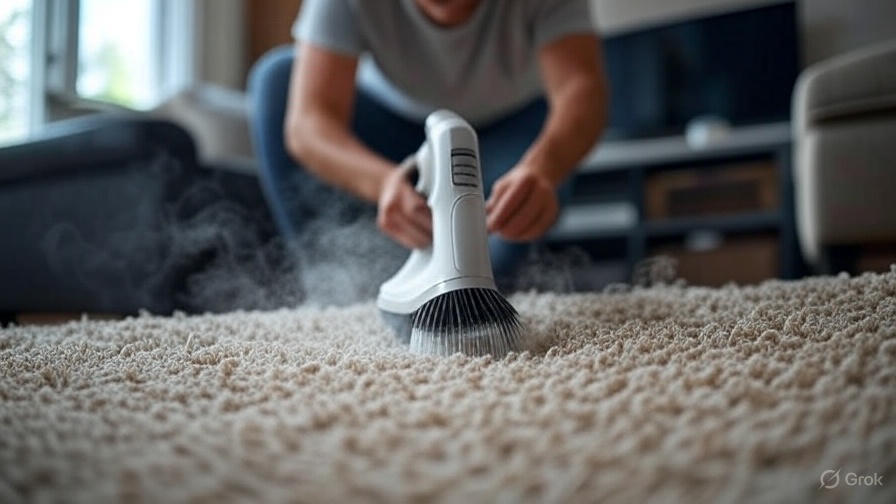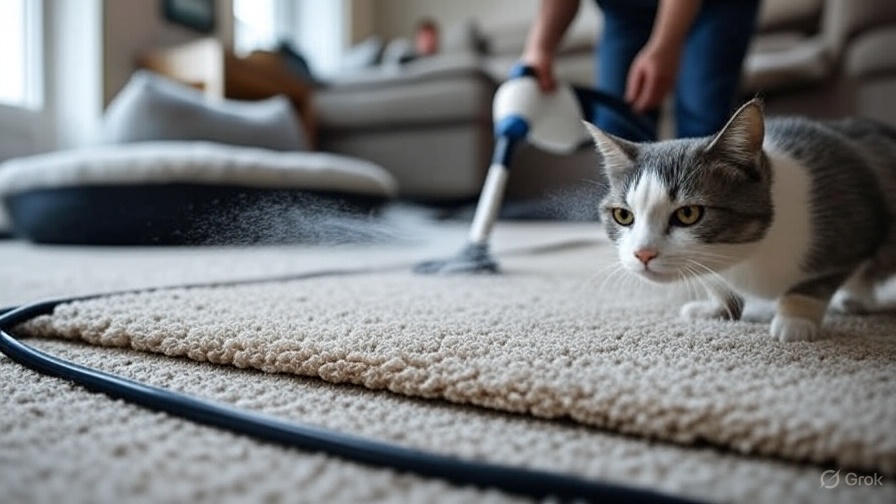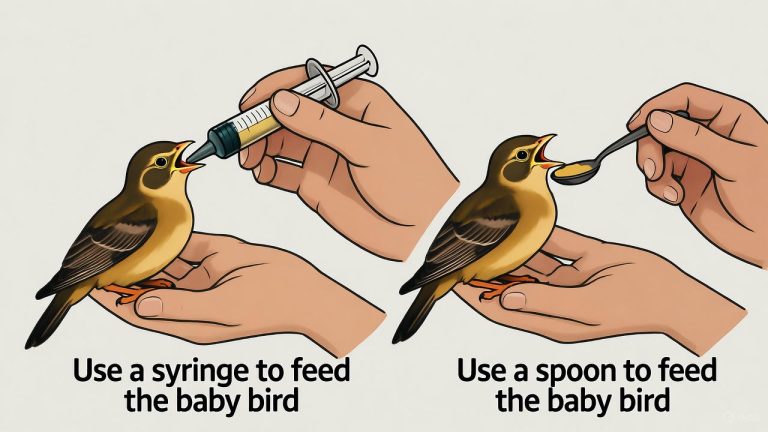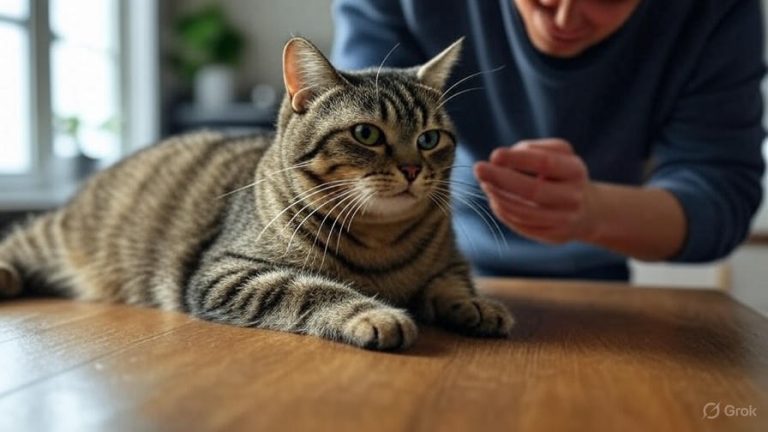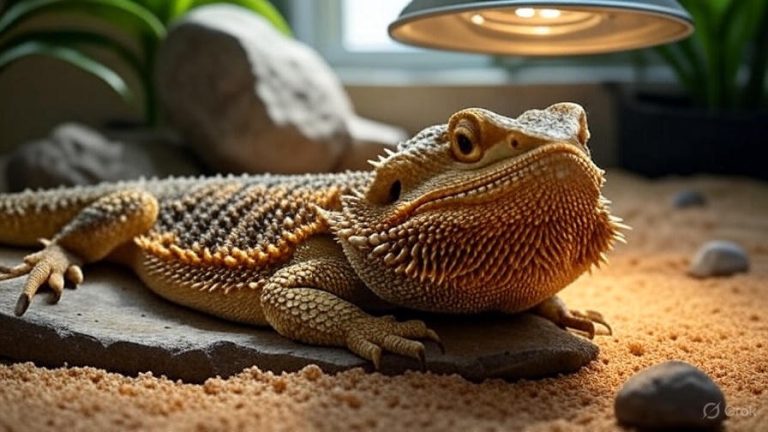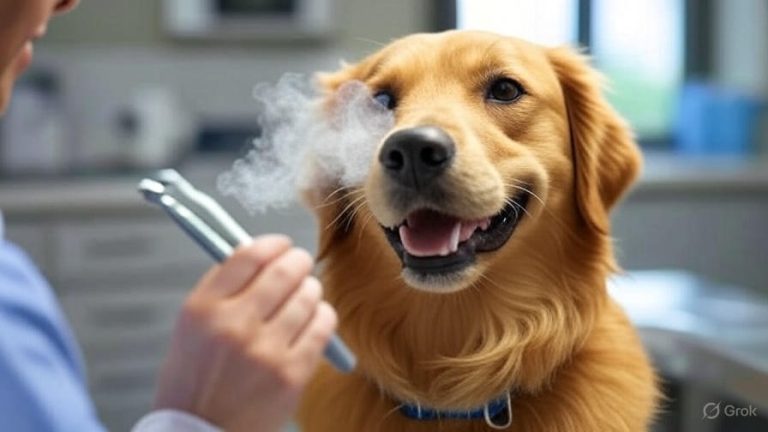How to Get Cat Urine Smell Out of Carpet?
Cat owners know the frustration all too well. You walk into your living room and catch that unmistakable ammonia scent wafting from your beautiful carpet. Cat urine odor ranks among the most challenging pet stains to eliminate, but the right approach can restore your carpet to its fresh-smelling condition.
The lingering smell happens because cat urine contains unique compounds that regular cleaning products can’t break down completely. These stubborn molecules bind deeply into carpet fibers and padding, creating persistent odors that seem impossible to remove. However, with the proper techniques and products, you can successfully eliminate even the strongest cat pee smell from your carpets.
Why Cat Urine Smells So Strong and Persistent
Cat urine produces such a powerful odor because of its complex chemical composition. Fresh cat pee contains urea, creatinine, uric acid, and various hormones and pheromones. As the urine sits and dries, bacteria begin breaking down these compounds, producing that sharp ammonia smell that makes your nose wrinkle.
The real problem lies with uric acid crystals. Unlike other urine components that dissolve in water, uric acid forms insoluble salt crystals that bond tightly to surfaces. Regular soap and water can’t dissolve these crystals, so the odor returns whenever humidity rises or moisture reactivates them. This explains why you might smell cat urine again on rainy days or after cleaning with traditional products.
Carpet fibers trap these odor-causing compounds deep within their structure. The backing and padding underneath absorb even more of the liquid, creating a reservoir of smell that continues releasing odors long after the surface appears clean. This multi-layer contamination requires specific treatment methods that penetrate all affected areas.
Essential Supplies for Cat Urine Odor Removal
Successful cat urine removal requires the right tools and cleaning solutions. Start gathering these essential supplies before you begin the cleaning process:
Cleaning Solutions:
- Enzymatic pet odor eliminator (most important)
- White vinegar
- Baking soda
- Hydrogen peroxide (3% solution)
- Liquid dish soap
- Rubbing alcohol
Equipment and Tools:
- Clean white towels or paper towels
- Spray bottles
- Wet/dry vacuum or carpet cleaner
- Black light or UV flashlight
- Rubber gloves
- Plastic wrap or aluminum foil
- Heavy books or weights
The enzymatic cleaner serves as your most powerful weapon against cat urine odor. These specialized products contain live bacteria that actually consume the odor-causing compounds in cat pee. Standard household cleaners only mask the smell temporarily, but enzymatic cleaners break down the source molecules completely.
Immediate Action Steps for Fresh Cat Urine
Quick response makes the biggest difference in odor removal success. The longer cat urine sits in your carpet, the deeper it penetrates and the harder it becomes to eliminate completely.
Start by blotting up as much liquid as possible using clean towels or paper towels. Press firmly to absorb the urine without rubbing it deeper into the fibers. Replace saturated towels with fresh ones and continue blotting until no more moisture transfers to the cloth.
Next, rinse the area with cool water to dilute the remaining urine. Pour a small amount of water over the spot and immediately blot it up. Repeat this process two or three times to remove as much urine as possible before it has time to set into the carpet backing.
Avoid using warm or hot water during initial treatment. Heat can actually set protein-based stains and odors permanently into carpet fibers. Stick with room temperature or slightly cool water for best results.
Locating Hidden Cat Urine Spots with UV Light
Old or dried cat urine stains become invisible to the naked eye but continue producing odors. A black light or UV flashlight reveals these hidden problem areas by making dried urine glow with a yellowish-green fluorescence.
Turn off all room lights and slowly scan your carpet with the UV light. Fresh urine spots appear bright and obvious, while older stains show up as fainter glowing areas. Mark each location with chalk or removable tape so you can find them again with normal lighting.
Check areas where your cat spends time, around the litter box, and near walls or furniture legs where territorial marking commonly occurs. Cats often return to previously soiled spots, so treating all affected areas prevents recurring problems.
The Enzymatic Cleaner Method (Most Effective)
Enzymatic cleaners offer the most reliable solution for permanent cat urine odor removal. These bio-based products work by introducing beneficial bacteria that literally eat the odor-causing compounds in cat pee.
Apply the enzymatic cleaner generously to cover the entire affected area plus a few inches beyond the visible stain boundaries. The solution needs to reach everywhere the urine penetrated, including the carpet backing and pad underneath. Don’t be afraid to use more product than seems necessary – thorough saturation ensures complete treatment.
Allow the enzymatic cleaner to work for the full time specified on the product label, typically 24-48 hours. Cover the treated area with plastic wrap or aluminum foil to prevent the solution from drying out too quickly. Place heavy books or weights around the edges to keep the covering in place.
The bacteria in enzymatic cleaners need time and moisture to break down all the uric acid crystals. Rushing this process or allowing the treatment to dry out prevents complete odor elimination and may require repeating the entire process.
DIY Natural Cleaning Solutions
White Vinegar Solution: Mix equal parts white vinegar and water in a spray bottle. Spray the solution over the affected area and let it sit for 5-10 minutes before blotting with clean towels. The acetic acid in vinegar helps neutralize alkaline cat urine and breaks down some odor compounds.
Baking Soda Treatment: After using the vinegar solution and allowing the area to dry completely, sprinkle a generous layer of baking soda over the spot. Let the baking soda sit for several hours or overnight to absorb remaining odors, then vacuum thoroughly.
Hydrogen Peroxide and Dish Soap: Combine 1 cup of 3% hydrogen peroxide with 1 teaspoon of liquid dish soap. Test this solution in an inconspicuous area first, as hydrogen peroxide can bleach some carpet colors. Apply the mixture to the stain, let it sit for 10 minutes, then blot and rinse with clean water.
Deep Cleaning Techniques for Stubborn Odors
Severe odor problems may require more aggressive treatment methods that penetrate deep into carpet backing and padding. These techniques work best when combined with enzymatic cleaners for maximum effectiveness.
Steam cleaning or hot water extraction can help flush out deeply embedded urine compounds. Rent a carpet cleaning machine or hire professional cleaners who specialize in pet odor removal. Make sure to use pet-safe cleaning solutions in the machine and allow extra drying time to prevent mold or mildew growth.
For particularly stubborn cases, you might need to pull back the carpet to treat the padding and subfloor directly. Urine that reaches the subfloor requires sealing with an odor-blocking primer before replacing the padding and carpet. This extensive process costs more but provides permanent results for severe contamination.
Professional vs DIY Cleaning: When to Call Experts
Minor accidents and fresh stains usually respond well to DIY treatment methods, especially when addressed quickly with proper techniques. However, certain situations call for professional intervention to achieve complete odor elimination.
Consider hiring professional cleaners when dealing with multiple old stains, large contaminated areas, or recurring odor problems that haven’t responded to repeated DIY attempts. Professionals have industrial-strength equipment and specialized products that penetrate deeper than household cleaning methods.
Professional services also make sense for expensive carpets or when health concerns arise from prolonged exposure to ammonia odors. The cost of professional cleaning often proves less expensive than carpet replacement, especially for high-quality flooring.
Preventing Future Cat Urine Accidents
Successful odor removal means nothing if your cat continues soiling the same spots. Address the underlying causes of inappropriate urination to prevent recurring problems and protect your carpet investment.
Medical issues cause many inappropriate urination behaviors in cats. Schedule a veterinary examination to rule out urinary tract infections, kidney disease, arthritis, or other health problems that make normal litter box use difficult or painful.
Litter box maintenance plays a crucial role in preventing carpet accidents. Keep boxes clean by scooping daily and completely changing litter weekly. Provide enough boxes for multiple cats (one per cat plus one extra) and place them in quiet, accessible locations.
Stress and anxiety trigger territorial marking and inappropriate elimination in many cats. Identify and address stress sources like new pets, moving, schedule changes, or environmental disruptions that might cause your cat to avoid the litter box.
Long-term Carpet Care and Odor Prevention
Regular carpet maintenance helps prevent odor problems and extends your flooring’s lifespan. Vacuum frequently to remove pet hair, dander, and tracked litter that can trap odors over time. Deep clean carpets every 6-12 months with pet-safe products to maintain freshness.
Install moisture barriers under carpets in areas where accidents commonly occur. These protective barriers prevent liquids from reaching subfloors and make cleanup much easier when accidents happen.
Consider switching to low-pile carpets or area rugs in spaces where your cat spends most of their time. These flooring options clean more easily and dry faster than thick, plush carpeting that traps odors deep within the fibers.
Alternative Flooring Options for Cat Owners
Sometimes the best solution for chronic cat urine problems involves replacing problematic carpeting with pet-friendly alternatives. Several flooring options resist odors and clean easily when accidents occur.
Luxury vinyl planks mimic the appearance of hardwood but resist moisture damage and odor absorption. These synthetic floors wipe clean with standard household cleaners and don’t require special treatment for pet accidents.
Ceramic or porcelain tiles create completely non-porous surfaces that can’t absorb urine or trap odors. While harder underfoot than carpet, tiles work well in basements, mudrooms, and other areas where accidents commonly happen.
Sealed concrete floors offer another odor-resistant option that works particularly well in modern home designs. Apply pet-safe sealers to create smooth, easy-to-clean surfaces that resist staining and odor absorption.
Testing and Monitoring Success
Proper testing ensures your cleaning efforts actually eliminated the odor rather than just masking it temporarily. Allow treated areas to dry completely before evaluating your results – moisture from cleaning solutions can temporarily suppress odors.
Use your nose as the primary testing method, checking the area at different times of day and in various weather conditions. Humid days often reveal lingering odors that seem gone during dry weather. If you detect any ammonia smell, repeat the treatment process with enzymatic cleaner.
UV light testing provides another verification method. Properly cleaned areas should no longer fluoresce under black light, indicating complete urine removal. Any remaining glow suggests the need for additional treatment cycles.
Conclusion: Achieving Permanent Odor Elimination
Removing cat urine smell from carpet requires patience, the right products, and thorough application techniques. While the process can seem overwhelming, following these proven methods will restore your carpet’s fresh smell and create a pleasant living environment for both you and your feline companions.
Remember that enzymatic cleaners provide the most reliable results for complete odor elimination. These biological products actually consume the odor-causing compounds rather than simply covering them up with fragrances. Give the enzymes adequate time to work, and don’t hesitate to repeat treatments for stubborn odors.
Success comes from addressing both the immediate odor problem and the underlying causes of inappropriate urination. Combine thorough cleaning with veterinary care, proper litter box maintenance, and stress reduction to prevent future accidents and keep your carpets fresh and odor-free for years to come.

